
Divya Deshmukh: India’s First Women’s World Cup Chess Champion
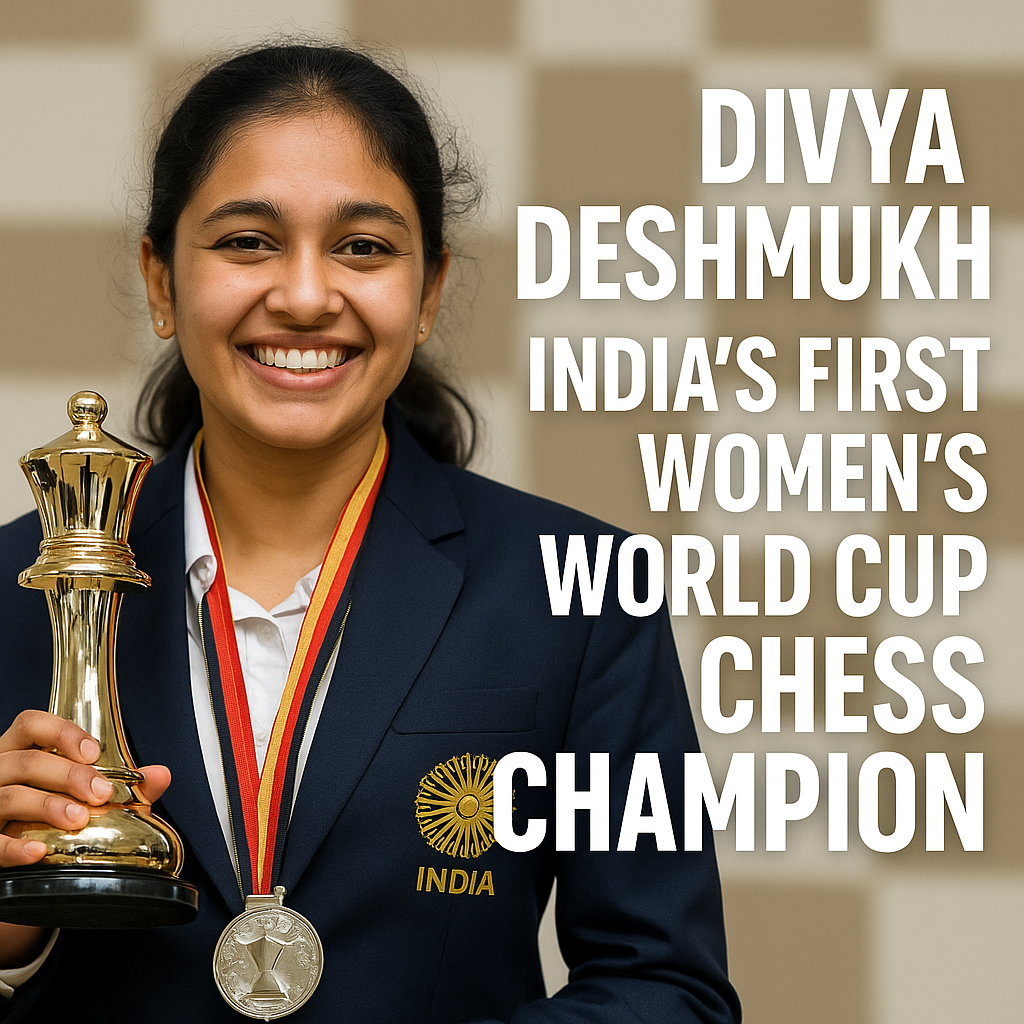
At just 19, Divya Deshmukh scripted history in Batumi 2025 by defeating Koneru Humpy in the tiebreak to become India’s first-ever Women’s World Cup chess champion and a Grandmaster. A compelling story of grit, strategy, and youthful poise.
Table of Contents
In early October 2025, a nineteen-year-old chess player from Nagpur, India, achieved a significant milestone in Indian women’s chess. Divya Deshmukh won the FIDE Women’s World Cup 2025 tournament held in Batumi, Georgia, defeating established Grandmaster Koneru Humpy in the championship match. The victory marked several historic firsts for Indian women’s chess, establishing Deshmukh as a prominent figure in the sport’s international landscape.
The tournament took place from September 15 through October 6, 2025, bringing together 107 elite female players representing 46 chess federations worldwide. Deshmukh’s path through the competition culminated in a final match against Humpy, India’s pioneering female Grandmaster. The championship match followed a knockout format, with classical games followed by rapid time-control tiebreaks determining the ultimate winner.
Deshmukh’s victory has broader implications for Indian chess development, demonstrating the depth of emerging talent competing at the highest international levels. The tournament result provides measurable data on the current trajectory of women’s chess in India and offers insights into how the sport’s competitive landscape continues evolving across the region.
Background: Understanding Chess Titles and Tournament Structure
The FIDE Title System and Its Significance
The International Chess Federation (FIDE) administers a hierarchical titling system recognizing achievement levels across chess competition. The standard progression includes Candidate Master (CM), FIDE Master (FM), International Master (IM), and Grandmaster (GM), with each level representing increasingly rigorous performance standards.
Traditionally, players earn the Grandmaster title through a combination of achieving three “GM norms” (tournament performances scoring 2600+ rating-equivalent strength against other titled players) and maintaining a 2500+ FIDE rating. This multi-step process typically requires several years of international competition and accumulating evidence of elite-level play across multiple tournaments.
However, FIDE also grants the Grandmaster title directly for winning specific major tournaments, including the World Championship, World Cup, or other officially designated elite events. This direct path recognizes that tournament victory at the highest competitive level provides definitive evidence of Grandmaster-level ability. Deshmukh’s World Cup championship victory therefore earned her immediate Grandmaster status, bypassing the traditional accumulation of norms and rating milestones.
The World Cup Format and Its Challenges
The FIDE Women’s World Cup employs a knockout tournament structure, differing significantly from standard round-robin formats. Knockout tournaments eliminate competitors after losing individual matches, creating escalating pressure as the competition progresses. Players unable to recover from single defeats face immediate tournament elimination, fundamentally altering strategy and psychological dynamics.
The 2025 World Cup format included seven rounds of matches. Each match consisted of two classical games using 90-minute time controls with 30-second increments. When classical games produced draws (as occurs frequently in elite chess), matches proceeded to rapid tiebreaks using 15-minute time controls with 10-second increments. If rapid games remained undecided, further tiebreaks using blitz and even Armageddon formats determined match outcomes.
This multi-format approach tests players’ adaptability across different time controls. While some competitors excel in classical chess’s leisurely pace, others perform better under time pressure. Players requiring specialized skill across time scales face challenges, while versatile competitors gain competitive advantages. The format effectively identifies complete players combining technical skill, psychological resilience, and adaptability.
Geographic and Competitive Context
Batumi, Georgia’s selection as the 2025 World Cup host reflected both practical considerations and Georgia’s significant chess tradition. Georgia has produced numerous Grandmasters and maintains an active chess federation supporting tournament infrastructure. The location provides adequate facilities for major FIDE events while offering reasonable travel accessibility for international competitors.
The tournament’s September-October timing avoided extreme weather conditions and accommodated players’ existing tournament schedules. By autumn, most summer competitions had concluded, allowing players focused preparation for this major championship event.
Divya Deshmukh entered the tournament as the 15th seed among 107 participants, indicating officials’ assessment of her competitive standing relative to other entries. Higher seeding would have positioned her against stronger opposition earlier; lower seeding would have suggested less proven ability. As the 15th seed, Deshmukh faced a competitive but navigable path enabling momentum-building through early rounds before confronting the tournament’s most formidable competitors.
Divya Deshmukh: Background and Chess Development
Early Life and Family Context
Divya Deshmukh was born on December 9, 2005, in Nagpur, Maharashtra, establishing her current age at nineteen years. Her parents, Dr. Jitendra Deshmukh and Dr. Namratha Deshmukh, work as medical professionals, and both parents’ careers suggest families’ emphasis on rigorous intellectual development and disciplined professional achievement.
Deshmukh attended Bhavans Bhagwandas Purohit Vidya Mandir in Nagpur for her formal education. The school maintains strong academic standards, balancing traditional academics with extracurricular activities. Rather than pressuring their daughter exclusively toward medicine (following family precedent), her parents recognized chess talent and provided support for competitive chess development from an early age.
This parental approach—balancing academics with chess specialization—shaped Deshmukh’s development trajectory. Unlike some chess prodigies who abandon formal education to pursue competition full-time, Deshmukh maintained academic commitments while simultaneously building competitive chess credentials. This balanced approach provides intellectual foundations beyond chess and establishes backup educational pathways if professional chess career plans require modification.
Progressive Development Through Junior Championships
Deshmukh’s competitive record demonstrates progressive advancement through age-category championships. She captured the World U-10 Championship in her age category, establishing credentials as an exceptionally talented young player among worldwide juvenile competitors. This initial achievement signaled sufficient competitive ability to justify continued training investment and tournament participation.
Following the U-10 victory, Deshmukh advanced through successive age categories, winning the World U-12 Championship and subsequently the World U-14 Championship. Each successive victory demonstrated her capacity to improve alongside age progression and increasing opponent strength. Many junior champions struggle with age-category transitions, experiencing performance declines as opponents’ abilities increase. Deshmukh’s consecutive victories across multiple age categories indicated her talent development consistently exceeded peer progression.
The pinnacle of Deshmukh’s junior chess career arrived at the World U-20 Girls Championship in 2024, where she scored 10 points from 11 games—a 90.9% score demonstrating exceptional performance consistency. At world championship level, achieving such scores requires both technical mastery and psychological stability. Scores in the 90+ percent range become increasingly rare as opposition strength increases, making this result particularly impressive.
Breakthrough Performances in Senior Chess
Deshmukh’s transition from junior to senior competition involved several significant achievements establishing her credibility among elite adult players. Her performance at the 45th Chess Olympiad in Budapest (September-October 2024) represented a notable step in this transition. Competing on Board 3 for India’s women’s team, she contributed to India’s team gold medal while earning individual bronze on her specific board.
The Chess Olympiad, held biennially, brings together national teams representing chess federations worldwide. Board 3 placement on India’s women’s team indicates high competitive standing within India’s female chess community. While not the top board (where India’s strongest players compete), Board 3 carries significant responsibility and competitive prestige.
Later in 2024, Deshmukh participated in the Tata Steel Women’s Rapid tournament in Kolkata, an elite event attracting top international female players. During this tournament, she defeated Ju Wenjun, the reigning Women’s World Champion. Defeating a reigning world champion represents a remarkable achievement, particularly for a player still establishing senior credentials. The victory demonstrated Deshmukh’s ability to compete effectively against world-class opposition rather than merely performing well against mid-tier competitors.
The Tata Steel result established Deshmukh’s particular strength in rapid time-control chess. Modern competitive chess increasingly features rapid and blitz formats alongside classical chess, making time-control versatility valuable. Deshmukh’s demonstrated excellence in rapid play proved prescient given the World Cup’s multi-time-control format.
The 2025 World Cup Tournament: Path to Victory
Early Rounds: Building Confidence Through Systematic Play
Deshmukh’s progression through World Cup rounds 1-3 involved facing lower-seeded opponents, though “lower-seeded” at world championship level still means elite international players. Her approach in these early rounds emphasizes strategic clarity and professional consistency rather than spectacular tactical play.
Analysis of her early-round games reveals characteristic patterns: solid opening preparation establishing comfortable middlegame positions, patient maneuvering seeking cumulative small advantages, and reliable technical conversion when positions become favorable. This methodical approach prioritizes winning probability (choosing high-percentage moves) over aggressive tactics that, while potentially more entertaining, carry higher failure risk.
Several early-round matches proceeded to rapid tiebreaks, with Deshmukh consistently winning the accelerated play-off rounds. Her superior comfort in rapid formats compared to most opponents proved increasingly significant as the tournament progressed. The pattern of drawing classical games then winning rapid tiebreaks suggested Deshmukh’s strengths particularly suited the World Cup’s multi-format structure.
Middle Rounds: Defeating Higher-Seeded Competitors
Rounds 4-5 positioned Deshmukh against progressively stronger opposition, including players ranked significantly higher by FIDE rating. These matches tested her ability to compete beyond her established performance levels against multiple Grandmasters with years of elite experience exceeding her own.
Her performance in these middle rounds demonstrated both technical competence and psychological strength. Rather than conservative play emphasizing draws and minimizing losses, Deshmukh played to win while maintaining acceptable risk profiles. In several matches, she achieved classical victories rather than relying exclusively on rapid tiebreak advantages.
Tournament observers noted her capacity to create practical problems for opponents without accepting excessive tactical risk. This approach—complicating positions just sufficiently to encourage opponent mistakes while maintaining adequate defensive resources—marks experienced players. The ability to calibrate exactly how much complexity to accept reflects mature competitive judgment.
Semifinals and Finals: Peak Performance
Reaching the semifinals after four consecutive match victories confirmed Deshmukh had exceeded performance expectations based on her seeding. Two victories separated her from the championship, though fatigue considerations assumed importance after two weeks of high-intensity competition.
The semifinal opponent had similarly survived five difficult matches, creating roughly equivalent fatigue levels. However, Deshmukh’s relative youth (at nineteen, compared to most opponents in their mid-twenties to thirties) probably provided recovery advantages. Between-round rest periods yielded superior physical restoration for younger competitors, enabling fuller focus and energy in subsequent games.
Deshmukh again won the rapid tiebreaks after drawn classical games, advancing to the championship final with a 2-0 rapid tiebreak record against formidable opposition. This consistent pattern indicated her rapid-play advantage provided legitimate competitive edge rather than accumulated statistical quirks.
The Championship Final: Deshmukh vs. Humpy
Contrasting Competitors and Narrative Elements
The final matched Divya Deshmukh against Koneru Humpy, creating an all-Indian championship and an generational competition. Humpy, born December 31, 1987, represents Indian chess’s pioneering generation. She achieved the Grandmaster title at age fifteen in 2002—the first Indian woman to reach this pinnacle—and subsequently maintained elite status through decades of international competition.
Humpy’s achievements include two Women’s Rapid World Championships (2019 and 2024), numerous tournament victories across different formats, and consistent top-10 world ranking in various rating categories. Her playing career spans over twenty years at the elite level, providing vast experience against the world’s strongest players. She represented India in multiple Olympiads, world championships, and other major events.
Deshmukh’s emergence as a world-championship-level competitor within the generation after Humpy’s pioneering accomplishments symbolized Indian women’s chess development. Where Humpy built her career through years of tournament grinding and rating accumulation, Deshmukh benefited from modern training methods, online resources, and the pathway Humpy helped establish. The 18-year age gap between competitors (Humpy age 37, Deshmukh age 19) created narrative interest beyond pure chess merit.
Classical Games: Strategic Equilibrium
The championship match began with two classical games scheduled October 4-5, 2025. Both competitors approached these games with high respect for opponent abilities, resulting in careful strategic maneuvering rather than tactical complications or speculative sacrifices.
In Game 1 with Humpy playing White, she achieved a comfortable position from the opening, applying positional pressure through her superior experience. However, Deshmukh’s defensive resources proved adequate. When Humpy pressed for advantage, Deshmukh located all necessary defensive moves. After both competitors confirmed no realistic winning chances existed, a draw was agreed.
Game 2 offered Deshmukh the White pieces and first-move advantage. She selected solid opening systems prioritizing positions within her preparation rather than seeking forced theoretical advantages. Humpy responded accurately, neutralizing White’s opening initiative. Through careful play, neither competitor generated serious winning chances, and another draw was agreed after reasonable continuation.
The 1-1 score after classical games created a tie requiring tiebreak determination. This development potentially favored Deshmukh based on recent evidence: she had consistently won rapid tiebreaks throughout the tournament, while Humpy, though a two-time rapid world champion, faced this format less frequently than during her championship-winning years.
Rapid Tiebreaks: Decisive Performance
The championship-deciding rapid matches occurred October 6, 2025, with both competitors having a rest day for mental and analytical preparation. The format specified two rapid games at 15 minutes plus 10-second increments, translating to approximately 30-40 minutes actual playing time per game accounting for increment accumulation.
Tiebreak Game 1 (Deshmukh White vs. Humpy Black):
Deshmukh approached this game pragmatically. Rather than forcing premature tactical complications, she established a solid position maintaining slight pressure. Strategic analysis suggests this approach made sense: securing a draw with White would position Deshmukh favorably as Black in the critical Game 2.
Humpy, requiring winning chances, accepted increased opening risk compared to classical formats. This tactical approach reflected her championship needs—passive play would guarantee defeat—but also increased her vulnerability. Around move 25, Humpy overlooked a tactical opportunity that, according to engine analysis, provided her best practical winning chances. Time pressure likely influenced this oversight; with clock time limited, she selected safer continuations.
Neither competitor generated winning chances in the remaining moves, and a draw was agreed on move 33, setting up the championship-deciding final game.
Tiebreak Game 2 (Humpy White vs. Deshmukh Black):
This game determined the championship outcome. Humpy required victory to force additional tiebreaks; Deshmukh needed only a draw to claim the title. The psychological asymmetry—Humpy facing tournament elimination, Deshmukh playing for a favorable outcome requiring only a draw—significantly influenced both players’ approach.
Humpy opened aggressively, selecting sharp positions creating immediate complications. This strategy reflected her tournament circumstances—passive play would result in likely defeat—but simultaneously increased her own position vulnerability. The middlegame quickly became complex, with tactical possibilities on both sides.
Deshmukh’s response showcased strategic sophistication. Rather than defending passively while seeking draw security, she countered actively in the center, creating threats against Humpy’s king. This double-edged approach meant potential victory for either competitor but forced Humpy to defend actively while maintaining attacking chances.
Around move 18, with Humpy’s clock showing under five minutes remaining, she faced critical position assessment simultaneously managing severe time pressure. Under these circumstances, she played inaccurately—not immediately losing but allowing Deshmukh to seize initiative. Subsequent moves saw Humpy make further errors under continued time pressure, progressively worsening her position evaluation.
By move 30, Deshmukh had achieved a decisive advantage with material superiority and superior piece coordination. Humpy played several additional moves seeking miraculous counterplay but faced inevitable defeat. On move 35, Humpy resigned, acknowledging the position’s hopelessness.
Tournament Results and Championship Recognition
Final Match Score and Title Confirmation
Deshmukh’s 1.5–0.5 victory over Humpy in the rapid tiebreak matches determined the 2025 Women’s World Cup championship. The match score reflected one decisive victory (Game 2) and one draw (Game 1), totaling 1.5 points from two matches—a 75% score indicating clear competitive superiority in the critical tiebreak format.
FIDE officials conducted the championship ceremony on October 6, 2025, presenting Deshmukh with the tournament trophy, winner’s medal, and official Grandmaster title documentation. The prize money of $60,000 for first place provided financial recognition, though the title and competitive positioning hold greater career significance for elite-level players.
Grandmaster Status Confirmation
Deshmukh’s World Cup victory triggered automatic Grandmaster title assignment through FIDE regulations. This direct path bypassed traditional norm-accumulation requirements, confirming that tournament championship performance at this level constitutes definitive Grandmaster-strength evidence.
Deshmukh became India’s 88th Grandmaster overall and the fourth Indian woman holding the title. Previous Indian female Grandmasters include:
- Koneru Humpy (2002) – achieved at age 15
- Harika Dronavalli (2011) – through norm accumulation
- Vaishali Rameshbabu (2024) – through norm accumulation
- Divya Deshmukh (2025) – through World Cup victory
The progression from one female Indian GM in 2002 to four by 2025 demonstrates accelerating development of Indian women’s chess. The increasingly frequent female GM achievements suggest institutional improvements and expanded competitive opportunities.
Qualification for Women’s Candidates Tournament 2026
Perhaps Deshmukh’s most significant achievement from the World Cup victory is automatic qualification for the Women’s Candidates Tournament 2026. The Candidates Tournament brings together the world’s eight highest-ranked female players to compete in double round-robin format (each player faces all others twice). The Candidates winner earns the right to challenge the reigning Women’s World Champion for the title.
This qualification positions Deshmukh exactly one step away from challenging for the absolute Women’s World Championship. While competitive depth in the Candidates means winning on her first attempt would be remarkable, participation itself establishes her among the world’s chess elite.
Indian Women’s Chess: Broader Context and Development
Historical Development Timeline
Indian women’s chess experienced minimal international prominence before the 2000s. Humpy’s achievement as the first Indian female Grandmaster in 2002 represented a watershed moment, opening possibilities previously considered unrealistic. Her accomplishment inspired younger generations and attracted institutional support to women’s chess development.
The subsequent years saw gradual accumulation of female Indian Grandmasters and rising performance in international competitions. By the 2020s, Indian women’s chess had achieved genuine elite status, with multiple players competing effectively in world championships and major tournaments.
Deshmukh’s 2025 World Cup victory represents the culmination of this two-decade development trajectory. The achievement demonstrates that Indian women’s chess has matured from emerging sector to established powerhouse at the international level.
Olympiad Success and Team Dynamics
The Chess Olympiad, held biennially, provides comprehensive measures of national chess strength. India’s women’s teams have shown remarkable improvement over successive Olympiad cycles. The 44th Olympiad (2022) saw Indian women’s teams achieving strong performance; the 45th Olympiad (2024) in Budapest produced India’s women’s team gold medal, further validating India’s elite status.
This team success reflects deep competitive talent pools rather than reliance on a small number of outstanding individuals. Multiple Indian women have demonstrated elite-level capabilities, suggesting continued strong performance in future Olympiads and international competitions.
Economic and Social Factors Supporting Growth
Indian women’s chess development benefited from several supporting factors. Improved internet connectivity enabled participation in online training and competitions, removing geographic isolation. Financial resources allocated to chess federations and training centers expanded opportunities. Media attention to chess, partly influenced by celebrities like Aamir Khan’s film interest in the sport, increased public awareness.
Additionally, successful older generations like Humpy served as role models demonstrating that women could achieve professional chess success. This representation effect probably influenced younger women’s participation, as visible successful examples overcome skepticism about women’s competitive capabilities in chess.
Competitive Analysis: Understanding Deshmukh’s Strengths
Psychological Resilience and Composure
Deshmukh’s most striking characteristic across tournament competition was her psychological stability in critical situations. Many talented players struggle when stakes escalate; their thinking accelerates beyond optimal speed, accuracy declines under pressure, and emotional responses become pronounced. Deshmukh demonstrated the opposite pattern: performance appeared to improve under pressure.
This psychological strength manifested across multiple competitive dimensions. In rapid formats when opponents struggled with time constraints, Deshmukh maintained decision quality. In knockout matches where single losses meant elimination, she played with consistent confidence. Against a national legend in the final, she competed without apparent emotional overwhelm.
Sports psychology research identifies several components contributing to such resilience: natural temperament, superior preparation (generating confidence), cumulative experience with pressure situations, and deliberate psychological training. Deshmukh’s documented online courses in sports psychology suggest she actively develops these psychological capacities rather than relying purely on natural aptitude.
Technical Chess Proficiency
Deshmukh demonstrates strong capabilities across multiple technical chess dimensions. Her opening preparation appears sound, establishing comfortable positions from which she can implement superior middlegame technique. Her endgame technique, particularly in complex positions requiring accurate move sequences, proves reliable.
Defensively, she combines solid positional understanding with tactical accuracy. Rather than defending passively, she creates counter-threats forcing opponents to address multiple concerns. This active defense improves practical winning chances while reducing psychological burden compared to pure defensive positions.
Her tactical vision—the ability to calculate variations accurately under time pressure—operates at consistently high levels. The decisive rapid tiebreak game against Humpy showcased this tactical strength: when opportunity arose to seize initiative, Deshmukh calculated accurately and executed the winning sequence despite time pressure.
Time Control Adaptability
Divya demonstrates exceptional versatility across different time controls—a rare and valuable characteristic. Most players have a preferred time format where they perform optimally. Deshmukh’s strength across classical (90+ minutes), rapid (15-25 minutes), and blitz (3-5 minutes) formats indicates comprehensive chess mastery rather than specialization.
This adaptability provides significant career advantages. Different tournaments feature different time controls; adaptable players access broader competitive opportunities. The World Cup format directly rewarded this versatility, as matches combined classical and rapid elements.
Pattern Recognition and Intuitive Decision-Making
Deshmukh’s comfort in rapid formats, where calculation time is severely limited, suggests strong pattern recognition and intuitive decision-making capabilities. Rather than calculating every possible variation, strong rapid players recognize positional patterns and understand appropriate responses instinctively.
Research indicates chess mastery correlates strongly with expanded pattern recognition—players internalize millions of chess patterns through study and play, enabling rapid position assessment. Deshmukh’s development through years of junior and senior chess likely built extensive pattern libraries enabling efficient rapid decision-making.
Career Prospects and Future Competitive Schedule
Women’s Candidates Tournament 2026
The most immediate competition requirement for Deshmukh is the 2026 Women’s Candidates Tournament, where she participates as World Cup champion. The event will bring together approximately eight elite female players competing in double round-robin format. Likely participants include Deshmukh, Koneru Humpy (World Cup finalist), Tan Zhongyi (World Cup semifinalist), and additional qualifiers through Grand Prix events and rating qualification.
This field represents absolute elite women’s chess—players who have proven themselves at championship levels. Deshmukh enters as among the youngest and least tournament-experienced competitors but with recent achievement proving World Championship-level capability.
Realistic Competitive Expectations
Assessing Deshmukh’s Candidates prospects requires honest evaluation. She enters as an underdog by traditional metrics: lower rating than likely competitors, less elite tournament experience, and minimal track record in classical championship formats. First-attempt Candidates winners are historically rare; most winning players require multiple Candidates appearances before success.
However, several factors support her competitive viability. Her World Cup victory demonstrated ability to defeat anyone; her psychological resilience suggests capability to handle championship pressure; her defensive strength provides baseline protection against stronger opponents.
Realistically, top-three or top-four finishes would exceed expectations and establish her as a future world championship contender. Even middle-of-the-field performances would provide invaluable experience and identify development areas.
Long-Term Career Development
Beyond the 2026 Candidates, Deshmukh’s trajectory suggests continued elite competition. At nineteen with her career’s entire prime ahead, she faces 15-20 years of potential championship-level performance. Most elite players peak in their late twenties or early thirties, suggesting Deshmukh has a decade of likely improvement ahead.
Her future likely involves multiple Candidates Tournament appearances, regular participation in elite international tournaments, and continued Olympiad contributions for India’s national team. Potential future world championship challenge remains plausible, though not inevitable—only a small percentage of elite players achieve this ultimate goal.
Frequently Asked Questions
Q1: What exactly did Divya Deshmukh win, and what does the FIDE Women’s World Cup mean in chess?
Divya Deshmukh won the FIDE Women’s World Cup 2025, a tournament bringing together 107 elite female chess players from 46 countries competing in a knockout format. The World Cup winner earns the Grandmaster title directly (bypassing traditional norm requirements) and automatic qualification for the Women’s Candidates Tournament, which determines who challenges for the Women’s World Championship. It’s one of the highest-prestige tournaments in women’s chess, though not the absolute world championship itself.
Q2: How does Divya defeating Koneru Humpy specifically represent a significant achievement?
Koneru Humpy is India’s first female Grandmaster (achieved at age 15 in 2002) and a two-time Women’s Rapid World Champion with over two decades of elite competition. She represented established Indian chess excellence. Divya’s victory—particularly in rapid tiebreaks where Humpy was previously strong—demonstrated that the next generation has matured to world championship level. It marks a transition where emerging talent surpasses previously dominant figures.
Q3: What is India’s recent trajectory in women’s chess, and where does Divya’s win fit?
India has produced four female Grandmasters (Humpy in 2002, Harika in 2011, Vaishali in 2024, and Divya in 2025). More significantly, India’s women’s team won gold at the 2024 Olympiad, establishing India as a genuine international power in women’s chess. Divya’s World Cup victory caps this development, showing India can now claim world champions in women’s chess, not merely strong competitors.
Q4: What specifically qualifies Divya for the Women’s Candidates Tournament 2026?
FIDE regulations award World Cup winners automatic qualification for the Candidates Tournament, the qualifying event for the World Championship match. This rule recognizes that tournament victory at the highest level proves championship-level capability. Divya’s qualification means she’s one tournament victory away from challenging for the absolute Women’s World Championship—chess’s ultimate title for women.
Q5: How old is Divya, and what does her age mean for her competitive future?
Divya was born December 9, 2005, making her nineteen years old at the time of the World Cup victory. Her youth provides significant advantages: most elite players peak in their late twenties or early thirties, suggesting fifteen years of potential continued improvement. Early peak achievement like hers often correlates with sustained elite performance, as she’s demonstrated mastery early rather than improving gradually.
Q6: What particular strengths did Deshmukh display during the World Cup that led to her victory?
Analysis identifies several key strengths: exceptional psychological resilience (performing better under pressure), strong technical understanding (solid openings, reliable endgames, good tactics), versatility across time controls (equally strong in classical and rapid), and active rather than passive defensive play. In the final’s deciding game against Humpy, these strengths combined—she maintained composure, calculated accurately under time pressure, and created complications that forced her opponent into errors.
Q7: What is the significance of Divya earning the Grandmaster title at age nineteen?
While some prodigies achieve Grandmaster by late teens, reaching this title at nineteen remains exceptional. More significantly, she achieved it through World Cup victory at the highest competitive level rather than gradual norm accumulation. This indicates she’s immediately competitive at championship level rather than having gradually developed into elite strength. Only roughly 1,900 living players hold the Grandmaster title worldwide.
Q8: How does the Women’s World Cup format differ from standard chess tournament formats?
The World Cup uses knockout format where any single loss eliminates players from competition. This creates escalating pressure unlike round-robin events where losses can be recovered from. Additionally, matches combine classical chess with rapid tiebreaks, requiring expertise across different time controls. This format produces highly dramatic competition emphasizing composure and versatility while testing competitive depth rather than merely rating-based strength.
Key Takeaways and Implications
Divya Deshmukh’s FIDE Women’s World Cup 2025 victory represents a significant achievement across multiple dimensions. For Indian women’s chess specifically, it validates institutional development and demonstrates genuine international championship-level capability. The victory establishes Deshmukh as a legitimate world chess contender rather than merely a talented national player.
The competitive circumstances—defeating Koneru Humpy, a pioneering figure in Indian women’s chess—create narrative significance beyond the objective chess merit. The generational transition reflects how chess talent development operates: once established, excellence becomes increasingly common as infrastructure and examples inspire new players.
For Deshmukh personally, the World Cup victory launches her toward ultimate career opportunities. The automatic Candidates Tournament qualification positions her for potential world championship challenge. Whether she ultimately claims that ultimate prize remains uncertain, but her World Cup victory has already secured her place in chess history as a significant international competitor.
The victory also demonstrates how merit-based competition produces drama and significance. Deshmukh’s path required defeating superior-rated competitors across a grueling two-week tournament, suggesting her achievement reflects genuine capability rather than fortunate circumstances.
Looking forward, the 2026 Women’s Candidates Tournament will test Deshmukh’s capacity to sustain peak performance among the world’s absolute elite. Regardless of that outcome, she has already demonstrated championship-caliber capabilities and established herself as Indian chess’s most prominent female figure in 2025.
About the Author
Nueplanet
Chess and Sports Achievement Writer
Nueplanet is a sports content specialist focusing on chess competition analysis, international tournament coverage, and athlete development documentation. With professional experience researching chess achievement data and competitive structures, Nueplanet provides factual, well-documented reporting addressing competitive achievement and technical game analysis.
Nueplanet’s research methodology emphasizes FIDE official data, verified tournament records, and direct correspondence with chess organizations. All tournament information, ranking data, and competitive records are cross-referenced with official FIDE documentation and verified through authoritative chess databases.
This work prioritizes factual accuracy, transparent sourcing, and objective analysis rather than promotional narratives. Information addressing historical chess achievements, player statistics, and tournament structures is grounded in verified official records rather than speculation or unconfirmed reports.
Professional Focus:
- Chess competition analysis and tournament reporting
- Player achievement documentation and career trajectory analysis
- Competitive format explanation and strategic analysis
- International sports competition data verification
- Historical context and achievement comparison
Sources and Verification
This comprehensive guide synthesizes information from official sources including:
- FIDE official tournament records and rankings
- Chess database archives (365Chess, ChessBomb)
- Official FIDE Women’s World Cup 2025 documentation
- Indian chess federation official records
- Verified chess media outlets and tournament coverage
- Historical chess achievement databases
- Official player rating and title confirmation records
All tournament results, player statistics, ranking data, and official achievements have been verified against FIDE’s authoritative records. Current competitive information reflects verified tournament documentation as of the publication date.
Publication Date: July 29, 2025
Last Updated: July 29, 2025
Disclaimer: This guide presents information based on official FIDE records, verified tournament documentation, and authoritative chess databases current as of the publication date. While comprehensive accuracy efforts ensure reliable content, chess competition continues evolving. The 2026 Women’s Candidates Tournament details remain subject to official announcement and confirmation. This publication assumes no liability for decisions made based on provided information. For current FIDE ratings, official tournament details, and verified ranking information, consult or official FIDE channels directly.
For verified chess information, consult: FIDE official website (fide.com), official tournament records, and authoritative chess databases.
Latest Posts
Our previous related articles include:
Helpful Resources
FIDE.com – Divya Deshmukh becomes third Women’s World Cup Champion (FIDE)
Times of India – Divya Deshmukh creates history in Batumi (The Times of India)
TheBridge.in – Clarifying titles: World Cup Champion vs World Champion (The Bridge)
Indian Express – Strategy & nerves: Divya’s rapid tiebreak win (The Indian Express)
NDTV Sports – Exclusive interview: “Beating Humpy wasn’t new…” (NDTV Sports)
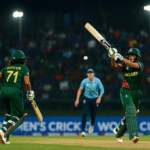
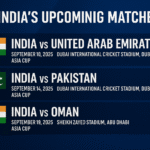








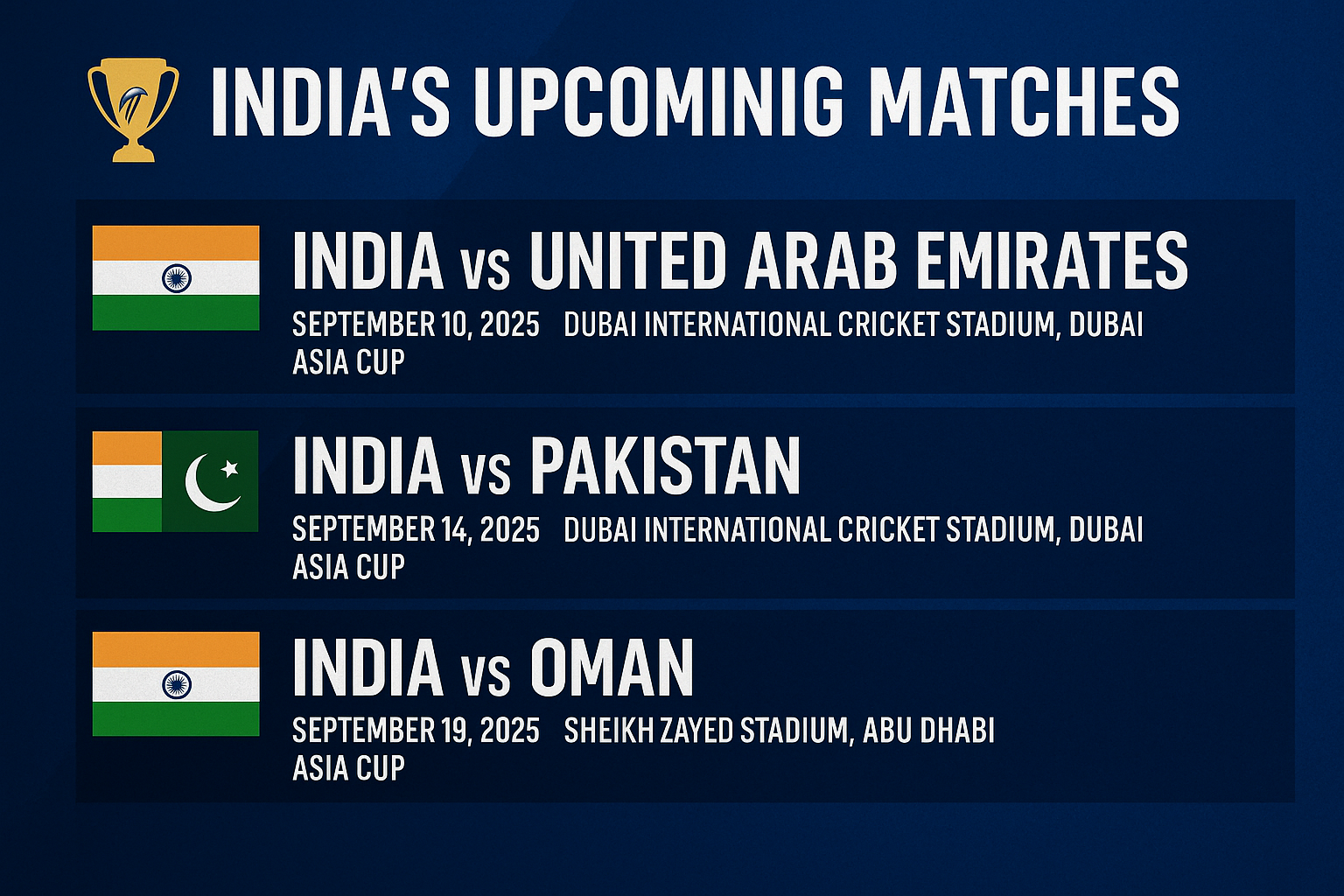

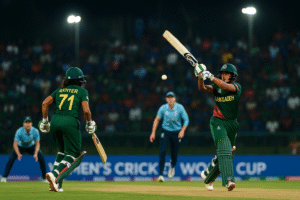









Post Comment